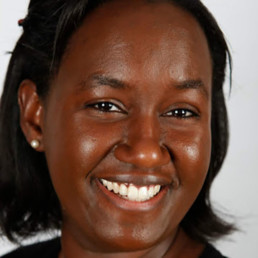
Written by Fabia Turner
Over ten years’ combined experience in education and educational publishing and a member of the Critics of Colour Collective
‘…appreciate our rich and varied literary heritage…’
Primary National Curriculum in England: Framework Document, Dec 2014
Something uncontrollably visceral stirred in me as I watched the global resurgence of the Black Lives Matter movement, with George Floyd’s dying face indelibly imprinted on my mind. I became perplexed and frustrated wondering how I, a stay-at-home-mum in leafy white-middle-class Richmond, could make my voice count; make a real difference for my people in this long uphill struggle against racism, injustice and inequality. I thought about my past work—my teaching and publishing careers—and how this might drive me to support change.
I completed a groundbreaking primary teaching course back in 2001: groundbreaking because at that time, I believe, it was the only PGCE course of its kind with multiculturalism at its core. Back then, I was fervently taught the importance of embedding cultural diversity into every aspect of my teaching practice. Scrutiny of the white-male-scientist trope and Eurocentric teaching resources was radical but also necessary to ensure all children encountered positive images from their own racial/cultural heritage in the classroom. (I continued to challenge these issues during my time working as the only Black editor at a well-known educational publishing company.)
Back to the present, and deep into the throes of Lockdown One and homeschooling, two things happened that really crystallised my thinking. Firstly, my mixed-heritage son confidently asserted that ‘all people in Africa live in huts’. I was taken aback by this and on further questioning realised he had acquired this misconception from reading his big ‘fact’ book.
I promptly researched for better books, and found not much in the way of age-appropriate reads, finally settling on Africa Amazing Africa by Atinuke which, although not perfect, offered a somewhat more nuanced depiction of life in individual African countries.
Secondly, one morning, I opened our home school pack and read: ‘We are learning about national treasure, Sir David Attenborough’. My heart sank! I love a bit of Dave…who doesn’t? But I couldn’t help thinking this was a missed opportunity. How far had education come in terms of diversity and representation since 2001? How many Black zoologists/naturalists were being overshadowed by Sir David, and not being studied in schools? How will children who look like my son be inspired to pursue a science career if white men still dominate their early learning experiences? I know that great work is being done so what’s going wrong? I decided, there and then, I wanted to do something specific to promote the use of diverse and inclusive resources in schools.
My personal insights within the context of the Black Lives Matter protests made me realised we need to go further in terms of accessing multicultural educational resources, especially Black literature. Black History Month is not enough; the odd book pack including the much overused Handa’s Surprise is not enough!
Regardless of how many Black children are in the class, more lessons and resources must reflect Black people as a matter of course, if we are to thoroughly challenge systemic negative racial prejudices and make a real difference for our children’s futures.
Publishers have a huge part to play in this disparity. The Centre for Literacy in Primary Education’s ‘Reflecting Realities’ report in 2019 stated that from the 11,011 children’s books published only ‘743 were found to have BAME presence’. This seems dire but until the situation improves, we need to ensure children are accessing the wealth of wonderful BAME books that have already been published.
I know teachers are tired and stressed by ever-changing government initiatives and ridiculous workloads and, now even more so, due to the unprecedented uncertainty that Covid-19 brings. I salute you! I could not do the job now under such tough conditions. But I do hope that somehow you will muster the energy to continue to be vigilant and reflective regarding your inclusive offerings. Comprehensive use of culturally diverse texts will instil a sense of self-worth, self-confidence, pride, motivation and belonging in Black children, which is more crucial now than ever before.
| Which of these books were written by Black authors? |
So, my blog has a new purpose: instead of critiquing theatre, I am reviewing as many Black children’s books as I can, in the hope I can support primary teachers and parents. Each book is linked to the EYFS and KS1/KS2 curricular, where appropriate, to offer ideas as to where it could be incorporated naturally within teaching and learning. In doing this, I hope to promote use of quality texts by brilliant Black writers and illustrators, such as Laura Henry-Allain, Trish Cooke, Lucy Farfort, Dapo Adeola, and Nathan Bryon.
I’ve also added a Black Children’s Book Directory which I’m constantly updating, and a teacher Resources section.
One day it will be commonplace for us to truly reflect our rich, diverse literary heritage in schools. Whether you’re a teacher, parent, publisher or bookseller I’d really love to hear about any recommendations of books you may have; feel free to send them to me. This blog is just the start of something—who knows how far it will go—let’s just keep going!
Support
If you find my blog helpful and would like to support my mission to get more quality Black children’s books into UK primary schools, then you can buy me a coffee here. Your donations, however small, will mean I can review more books and devote extra time to this mission. It will also help me to promote small independent bookstores instead of linking my reviews to Amazon. I appreciate any support you can offer. Thank you!

